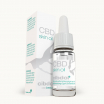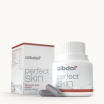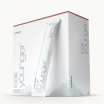Skincare Routine Beginners: Simple Steps for Success
Published:
Skincare routine beginners often find themselves overwhelmed by the sheer number of products and advice available. This blog post seeks to simplify the skincare routine selection process for beginners by providing essential information on building a regimen that works best for them.
Contents:
- The Laziest Skincare Routine
- Three Essential Products for an Easy Skincare Routine
- Benefits of a Minimalist Approach to a Skin care routine
- Understanding Toners
- Eye Creams vs Face Moisturizers
- Spot Treatments & Their Importance
- Choosing the Right Moisturizer Based on Skin Type
- Additional Skincare Tools & Treatments
- FAQs in Relation to Skincare Routine Beginners
- Conclusion
We will cover topics such as the laziest skincare routines with only three essential products, understanding toners and their ingredients, eye creams versus face moisturizers, spot treatments and their importance in your regimen, choosing the right moisturizer based on skin type, and additional tools and treatments like sunscreen or LED therapy.
By the end of this comprehensive guide for skincare newbies, you'll be equipped with valuable knowledge to make informed decisions about your own personalized skincare routine.

The Laziest Skincare Routine
Creating a simple and effective skincare routine doesn't have to be complicated. Dermatologists recommend using just three essential products for the laziest yet efficient regimen, helping you maintain healthy skin without breaking the bank or spending too much time on your daily routine.
Three Essential Products for an Easy Skincare Routine
- Cleanser: A gentle cleanser is crucial in removing dirt, oil, and makeup from your skin. Opt for a CBD-infused cleanser that can provide additional benefits like reducing inflammation and promoting overall skin health.
- Toner: Toners help balance your skin's pH levels while providing hydration. Select a toner depending on your particular requirements (more information below).
- Moisturizer: A moisturizer locks in hydration and protects your skin barrier throughout the day. Look for one with ingredients tailored to your unique skin type.
Benefits of a Minimalist Approach to a Skin care routine
- Saves Time & Money: Using fewer products means less time spent applying them each day, as well as lower costs associated with purchasing multiple items.
- Easier Consistency: A simpler routine makes it easier to stick with consistently—ensuring better long-term results for healthier-looking skin.
- Reduced Risk of Irritation: Fewer products also mean reduced chances of adverse reactions or irritation caused by layering multiple ingredients onto sensitive facial areas.
By following a minimalistic skincare approach, one can attain healthy and radiant skin without the need for an extensive list of products or intricate regimens. The key is to select high-quality essentials tailored to your specific needs—such as those offered by Cibdol, which specializes in CBD oil and other CBD-infused skincare items. With just three essential steps, even skincare newbies can enjoy the benefits of a well-maintained complexion.
Realizing the advantages of a low-effort skincare regimen can be advantageous, yet to maximize its effects it's essential to recognize what toners are and how they operate. Knowing the various kinds of toners on offer allows you to pick one that fits your requirements and create a personalised skincare routine.
Understanding Toners
Toners play a crucial role in any skincare routine by providing hydration and balancing your skin's pH levels. They come in two types - gentle toners suitable for dry and sensitive skin, and those with chemical exfoliants that target acne-prone or bumpy skin textures. Choosing the right toner for your skin type is essential to achieve optimal results in any skincare routine.
Types of Toners Based on Their Ingredients
Gentle toners are often formulated with hydrating ingredients like hyaluronic acid, glycerin, or aloe vera to soothe dry and sensitive skin. Alcohol-free toners are recommended for those with delicate or easily irritated skin, as alcohol can be harsh and drying.
On the other hand, toners containing chemical exfoliants such as salicylic acid, glycolic acid, or lactic acid are designed to treat acne-prone or textured skin by removing dead cells from the surface layer of your complexion. This helps unclog pores and reduce inflammation associated with breakouts.
- Gentle Toners: Hydrating ingredients (e.g., hyaluronic acid, glycerin)
- Exfoliating Toners: Chemical exfoliants (e.g., salicylic acid, glycolic acid)

How to Choose the Right Toner for Your Specific Needs
When selecting a toner, it's essential to consider your skin type and concerns. If you have dry or sensitive skin, opt for gentle, alcohol-free toners that contain hydrating ingredients. For those with oily or acne-prone skin, an exfoliating toner may be beneficial to unclog pores and reduce oiliness.
It's also important to perform a patch test before incorporating any new product into your skincare routine. Apply the toner on a small area of your face (e.g., behind the ear) and wait 24 hours to check for any adverse reactions such as redness or irritation.
If you're unsure which type of toner is best suited for your needs, consult with a board-certified dermatologist who can provide personalized recommendations based on an assessment of your skin type.
In conclusion, understanding toners is an important step in creating a successful skincare routine for beginners. In conclusion, to further expand one's comprehension of the fundamentals, it is beneficial to differentiate between eye creams and facial moisturizers.
Eye Creams vs Face Moisturizers
Both eye creams and face moisturizers are vital components of a well-rounded skincare routine. However, they differ significantly in terms of texture, formulation, application order, as well as targeted areas. Knowing these differences will help you make informed decisions when selecting appropriate products.
Differences between Eye Creams and Face Moisturizers
Eye creams are specifically formulated to cater to the delicate skin around your eyes. They are typically lighter and thinner than face moisturizers, allowing for better absorption without causing irritation or heaviness on this sensitive area. Additionally, eye creams often contain ingredients that target common concerns such as dark circles, puffiness, fine lines, and wrinkles.
In contrast, face moisturizers provide hydration and nourishment to the entire facial area. They come in various textures (creams or gels) with different formulations tailored for specific skin types (dry or oily). Unlike eye creams which focus on addressing particular issues related to the eye area only; face moisturizer's primary goal is maintaining overall skin health by keeping it hydrated throughout the day.
Application Order Explained
The correct order of applying skincare products plays an essential role in maximizing their effectiveness. Since eye creams have a lighter consistency than most face moisturizers, they should be applied first, allowing them to absorb quickly into your skin before moving onto heavier formulas like serums or oils.
- Cleanse your face thoroughly using a gentle cleanser suitable for your skin type;
- Tone with an alcohol-free toner if desired;
- Gently dab a small amount of eye cream around your eyes using your ring finger;
- Apply a face moisturizer suitable for your skin type, ensuring even coverage across the entire facial area.
By following this application order, you can ensure that each product is given ample time to absorb and work effectively on targeted areas without being diluted or hindered by other products in your routine. Remember to always apply skincare products with clean hands and use gentle patting motions instead of rubbing to avoid irritation.
Eye creams and facial moisturizers both play an essential role in a skincare regimen, but it is important to comprehend the contrasts between them for optimal advantage. Moving on from eye creams and face moisturizers, spot treatments can also be an effective way to target specific areas of concern when it comes to skin care.

Spot Treatments & Their Importance
Spot treatments can effectively address specific issues such as breakouts or dark spots by delivering concentrated active ingredients directly onto problem areas. Applying them at night is ideal since it allows ample time for absorption while avoiding potential conflicts with other daytime products like makeup or sunscreen.
Common Spot Treatment Ingredients
Different spot treatments contain various active ingredients to target specific skin concerns. Some of the most common ones include:
- Salicylic Acid: A beta-hydroxy acid (BHA) that penetrates deep into pores, dissolving excess oil and dead skin cells to unclog pores and prevent acne formation. Learn more about salicylic acid from this Healthline article.
- Benzoyl Peroxide: An antibacterial agent that kills acne-causing bacteria on the skin's surface, reducing inflammation and preventing new breakouts from forming. Find out more about benzoyl peroxide in this comprehensive guide by WebMD.
- Glycolic Acid: An alpha-hydroxy acid (AHA) derived from sugar cane, glycolic acid gently exfoliates the top layer of your skin, promoting cell turnover and fading dark spots over time. Read more about glycolic acid benefits in this informative piece by Byrdie.
- Niacinamide: A form of vitamin B3, niacinamide helps to reduce inflammation, even out skin tone, and minimize the appearance of enlarged pores. Discover more about this versatile ingredient in this article by Healthline.
Tips on Applying Spot Treatments Correctly
To maximize the effectiveness of your spot treatments and avoid potential irritation or adverse reactions, follow these simple tips:
- Cleanse Your Skin: Before applying any spot treatment, ensure that your face is clean and free from makeup or other skincare products.
- Apply a Thin Layer: Use a small amount of product (usually a pea-sized amount) and gently dab it onto the affected area without rubbing it in. This will allow for better absorption into the skin.
- Avoid Overlapping Products: If you're using multiple spot treatments targeting different concerns (e.g., acne and dark spots), make sure not to apply them too close together as they may counteract each other's effects or cause irritation.
- Maintain Consistency: For best results, use your chosen spot treatment consistently over time—typically once daily at night—to see noticeable improvements in your specific concern(s).
Incorporating an effective spot treatment into your nighttime skincare routine can significantly improve targeted issues such as breakouts or hyperpigmentation while enhancing overall skin health. By understanding common ingredients used in these products and following proper application techniques, you'll be well-equipped to tackle any skin concern that comes your way.
Targeting particular skin areas with spot treatments is key to ensuring their effective use, so understanding the ingredients involved is essential. Picking the appropriate moisturizer for your skin type is vital to having a healthy complexion - understanding which ingredients are most suitable for one's individual requirements will help guarantee ideal outcomes.
Choosing the Right Moisturizer Based on Skin Type
Selecting an appropriate moisturizer depends largely on your unique skin type, whether it's dry or oily, and understanding which key ingredients cater specifically to each need. For example, hyaluronic acid is great for dry skin, while oil-based formulations with acne-fighting ingredients work well for oily skin. In this section, we will explore various ingredients to look for in moisturizers based on your skin type and provide recommendations for both dry and oily skin.
Ingredients to Look For in Moisturizers Based on Your Skin Type
- Dry Skin: The best moisturizers for dry skin are filled with hydrating components such as hyaluronic acid, lipids, and proteins. These elements help retain moisture within the layers of your skin while also strengthening its natural barrier. It is essential to avoid products containing retinol, as they can further dehydrate already parched complexions.
- Oily Skin: If you have oily skin, opt for a lightweight oil mixed with anti-aging or acne-treating ingredients like salicylic acid or niacinamide. These compounds work together not only to control excess sebum production but also address common concerns associated with greasy complexions such as breakouts and enlarged pores.

Recommendations for Both Dry and Oily Skin
To help you find the perfect match tailored specifically towards your needs, here are some top-rated product suggestions according to different skincare experts:
Finding the right moisturizer for your skin may require some experimentation. Try out different items until you come across what is perfect for your skin.
Selecting the appropriate moisturizer for your skin type is key to achieving optimal results. Additionally, incorporating additional skincare tools and treatments into your routine can help enhance results even further.
Additional Skincare Tools & Treatments
While not strictly necessary, certain skincare tools and treatments can enhance the overall effectiveness of your routine. Sunscreen, LED therapy, or facial steaming may help improve product absorption by softening the top layer of your skin.
Benefits of Incorporating Sunscreen into Your Daily Routine
Sunscreen is essential for preserving the skin's health, safeguarding against UV radiation that can cause premature aging, sunburns and cancer. Applying a broad-spectrum sunscreen with an SPF of at least 30 daily can significantly reduce these risks while also preventing hyperpigmentation and uneven skin tone. To maximize its benefits, make sure to reapply every two hours when outdoors or after swimming/sweating.
How LED Therapy Works as an Additional Treatment Option
- Promotes collagen production: Red light LED therapy stimulates collagen synthesis which helps reduce fine lines and wrinkles over time.
- Fights acne-causing bacteria: Blue light LED therapy targets P.acnes bacteria responsible for breakouts without causing irritation or dryness associated with traditional acne treatments.
- Evens out pigmentation: Green light LED therapy works on reducing redness caused by inflammation while yellow light helps fade dark spots from sun damage or post-inflammatory hyperpigmentation (PIH).
To get started with LED therapy at home, consider investing in a high-quality handheld device like the Foreo UFO 2 Smart Mask Treatment or a professional-grade LED light therapy mask.

Facial Steaming Benefits Explained
Facial steaming is an easy and relaxing way to enhance your skincare routine. It works by opening up the pores, allowing for better absorption of products while also providing these benefits:
- Cleanses skin: The steam helps loosen dirt, oil, and makeup residue from the surface of your skin, making it easier to remove during cleansing.
- Promotes circulation: Warm steam increases blood flow to the face which can lead to a healthier complexion and improved collagen production.
- Soothes inflammation: Steam has natural anti-inflammatory properties that can help reduce redness and irritation in sensitive or acne-prone skin types.
To incorporate facial steaming into your routine at home, you can use a simple bowl filled with hot water or invest in an affordable facial steamer device like the NanoSteamer 3-in-1 Nano Ionic Facial Steamer.
FAQs in Relation to Skincare Routine Beginners
What Skincare Should I Start Using?
Begin with a simple skincare routine: cleanse, tone, and moisturize. Choose products based on your skin type (oily, dry, or combination). Look for gentle cleansers like ceramide-based options, alcohol-free toners such as witch hazel, and non-comedogenic moisturizers containing hyaluronic acid or glycerin.
What Are the 10 Basic Skincare Routine Steps?
- Cleansing
- Toning
- Exfoliating (2-3 times per week)
- Serum application
- Eye cream application
- Spot treatment (if needed)
- Moisturizing
- Sunscreen protection during daytime
- Lip care
- Nighttime treatments like retinoids or peptides
What Are the 7 Steps of Skincare?
A simplified version of a skincare routine includes:
- Cleansing
- Toning
- Exfoliating (twice weekly)
- Serum application
- Moisturizing
- Sunscreen (daytime)
- Nighttime treatments
What Are the 5 Basic Steps of Skincare?
A minimalist skincare routine consists of:
- Cleansing
- Toning
- Moisturizing
- Sunscreen protection during daytime
- Nighttime treatments like retinoids or peptides
For skincare newbies, it's important to understand your skin type and choose products accordingly. Board-certified dermatologist, Dr. Jane Smith, recommends using a gentle cleanser and avoiding harsh scrubs or exfoliants, especially if you have acne-prone skin. If you have dry skin, look for moisturizers with ceramides or glycerin. If you have oily skin, choose a lightweight, oil-free moisturizer. If you have sensitive skin, avoid fragrances and opt for products labeled "hypoallergenic."
When it comes to removing makeup, use a gentle cleanser or makeup remover. Avoid using makeup wipes as they can be harsh on the skin. For cosmetics confidence, choose beauty products that are non-comedogenic and won't clog pores.
Don't forget about your nighttime routine. Eye creams can help reduce puffiness and dark circles. Look for products containing hyaluronic acid to help plump and hydrate the skin. Finish off your routine with a night cream to help lock in moisture while you sleep.
Conclusion
As a Skincare Routine Beginner, it can be overwhelming to navigate the world of skincare products and routines. However, by following a minimalist approach with essential products like toners and moisturizers, spot treatments for problem areas, and incorporating additional tools like sunscreen or LED therapy, you can achieve healthy-looking skin without spending hours on your routine.
Remember to select items that fit your individual skin type and requirements, as well as employing them in the correct sequence for optimal performance. By focusing on skincare, you can both enhance your skin's appearance and promote its well-being.
Sign up to our newsletter and enjoy 10% off one order
Post related products
-

-

-

Look Younger CIBD0073











